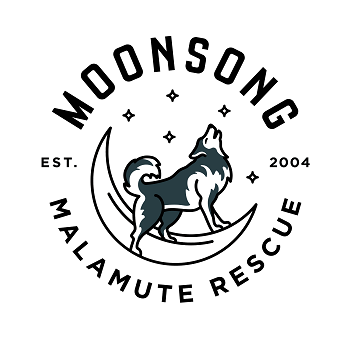
Photo by Freepik
So, you want to save an Alaskan Malamute or a Siberian Husky. Maybe you saw one at a shelter, their icy-blue eyes peering through the bars, or maybe a rescue organization’s social media post tugged at your heartstrings. Either way, you’re ready to step up and give one of these gorgeous northern dogs a second chance. But before you bring one home, you need to know what you’re signing up for. Malamutes and Huskies are not your average dogs—they are powerful, independent, and sometimes downright mischievous. If you’re not prepared, they’ll outsmart you, outlast you, and probably redecorate your living room with a pile of shredded couch cushions. Here’s what you need to consider before making the leap.
These Dogs Are Built to Work, Not Lounge
If you’re looking for a couch companion, look elsewhere. Both Malamutes and Huskies were bred to haul heavy sleds across frozen landscapes, and while your living room is significantly warmer than the Arctic, their energy levels haven’t changed. They need structured exercise—long walks, hikes, runs, or even pulling a weighted sled in the backyard. A simple trip around the block won’t cut it. Without enough stimulation, they will create their own entertainment, which often involves destroying something expensive.
Escape Artists Extraordinaire
You might think you have a secure backyard, but if you bring home one of these dogs, you’ll quickly learn that fences are mere suggestions to them. Huskies are notorious jumpers and climbers, while Malamutes, with their sheer strength, will dig their way to freedom if given the chance. A six-foot fence? Child’s play. Underground reinforcement? Smart, but they’ll test every inch of it. If you rescue one of these breeds, you need to be just as determined as they are—otherwise, you’ll be chasing your dog through the neighborhood more often than you’d like.
Independent Thinkers
Don’t expect the eager-to-please attitude of a Labrador. Malamutes and Huskies are intelligent, but they have their own agenda. They were bred to think for themselves—after all, a sled dog that follows orders blindly in dangerous conditions isn’t much use. This means training takes patience and consistency. They’re capable of learning commands, but they’ll obey only if they respect you (or if there’s something in it for them). Positive reinforcement works best, but be prepared for selective hearing when they spot a squirrel or decide they’d rather be doing something else.
Double the Fur, Double the Mess
These dogs come with a built-in winter coat, and they shed. A lot. If you adopt a Malamute or Husky, you might as well invest in a high-powered vacuum now. Twice a year—during the infamous “coat blow”—your home will look like it’s been hit by a fur storm. Hair will be on your furniture, in your clothes, in your food, and probably in places you didn’t even know hair could reach. Daily brushing helps, but there’s no escaping it. If you’re a neat freak, this might not be the breed for you.
Not Always Dog-Friendly
While Huskies tend to be social butterflies with other dogs, Malamutes are a different story. They were originally bred to work alone or in small teams, which means they can be same-sex aggressive or just flat-out not interested in making canine friends. If you already have a dog at home, introductions should be slow and carefully managed. Even if they get along initially, things can change as your Malamute matures. You have to be ready to monitor interactions and know when to intervene.
Howl You Doing?
Huskies are famous for their talkative nature—howling, yodeling, and making strange, almost human-like sounds. Malamutes, on the other hand, are more likely to “wooo” in a deep, dramatic voice that sounds like they’re singing the blues. It’s endearing until it’s 2 a.m. and your dog decides it’s time for a duet. If you live in an apartment or have noise-sensitive neighbors, this might not be the best fit. But if you enjoy a chatty companion, you’ll never have a dull moment.
Rescuing the Right Way
If you’re still on board and ready for the challenge, finding a reputable rescue is key. There are plenty of breed-specific organizations dedicated to Malamutes and Huskies, and they’ll help match you with a dog that fits your lifestyle. Be honest about what you can handle—some rescues need experienced owners, while others might be better suited for first-timers. And remember, a rescue dog may come with baggage. Patience, love, and a structured routine can work wonders, but you have to be willing to put in the time.
Keeping All That Paperwork Organized
When you rescue a Malamute or Husky, you’re not just bringing home a dog—you’re also inheriting a pile of paperwork. Between adoption contracts, vet records, vaccination histories, and training guides, keeping track of everything can get overwhelming fast. Having all these documents in one place makes life easier, especially when you need to reference medical information or revisit behavior assessments. One of the most efficient methods to combine files into a PDF allows you to merge everything into a single, organized document, ensuring you always have quick access to the records you need—whether it’s for a vet visit, a trainer, or just peace of mind.
Bringing home a Malamute or Husky isn’t just about saving a dog—it’s about embracing a whole new lifestyle. If you’re willing to meet them on their terms, they’ll reward you with loyalty, companionship, and more adventure than you ever thought possible. Just be prepared for the fur, the stubbornness, and the occasional Houdini act.
Discover how you can make a difference in the lives of Northern Breed dogs by visiting Moonsong Malamute Rescue and exploring ways to adopt, volunteer, or support their mission today!

